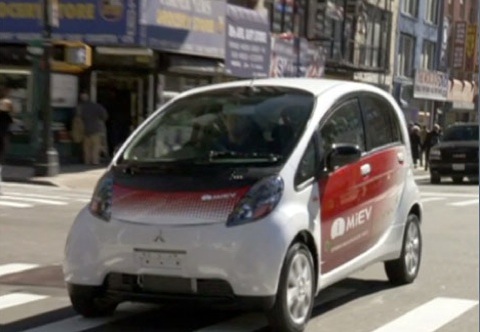Electric Vehicle Charging Passes Inspection
22 Aug, 2009 10:55 pm
Plug-in Hybrids (PHEV) and Battery Electric Vehicles (EV) are destined for success. Thousands of key players have converged at the Plug-in 2009 Conference in Long Beach, California. In the opening workshop they talked about giving the customer a pleasant, easy-to-use, no hassle, safe and cost effective experience. The key players included auto makers, electric utilities, and community leaders who are installing thousands of vehicle charging stations.
 |
Given the potential for energy security, a climate solution, and lowering monthly fuel costs, who would want to stop this? Who could? A terrorist needing oil money? An oil executive? A conspiring auto maker? None of the above. The biggest concern is that the number one ?speed bump? will be bureaucracy. Enid Joffe with Clean Fuel Connection was in the middle of the first wave of installing 7,500 chargers and in the current challenges of installing chargers from BMW?s MiniE.
Her customers have been caught in the catch-22 of the utility not approving charger installation without a city permit and the city refusing a permit without utility approval. A process that should take a few days and cost a few hundred dollars can take 45 days and cost thousands:
o Apply for license (in person in some locations, online in others)
o Proof of insurance
o City Permit to installer (much easier if charger is a legally categorized as an appliance)
o Utility Contract review
o Electrician installs adapter
o Utility returns to install separate meter
To encourage EV adoption, the City of New York has created a streamline process.
Fleet investment can be significant. They must often add electrical infrastructure, such as expanded switchboards and dedicated circuits.
EV adoption will accelerate if consumers can comfortably deal with one point of contact with a friendly website and friendly people. Easy installation and a modest added charge on their utility bill would be most desirable. It is encouraging that all the stakeholders recognize this and are negotiating solutions.
Also encouraging is common charging plugs, interfaces, and communication protocols. Over 10,000 charging stations are being planned for installation in the U.S. at major employers, busy city streets, busy garages, shopping malls, universities, and other places where people are likely to use their electric vehicles.
Many vehicles are not parked in garages. They are parked in carports, driveways, apartment parking lots, fleet parking lots, and on city streets. As GM readies introduction of its Chevy Volt, it demonstrated a 25-foot cable connector that it will provide with the vehicle. Yes, it will work outside. Getting it wet does not hurt it, or anyone standing in the wet. It adheres to new standards such as SAE J1772 so that it will work with any of the standard charging stations being installed. It communicates, so that a driver cannot forget and drive off while still plugged-in. Little details. Attention to the little details can make us optimistic about a driving future that is increasingly electric.
John Addison is reporting from Plug-in 2009 in Long Beach, California. California is currently home to 25,000 electric vehicles. Several thousand new charging stations are planned for 2010.
Originally posted on Cleantech Blog
-
12/12/12
Peak Oil is Nonsense Because Theres Enough Gas to Last 250 Years.
-
05/09/12
Threat of Population Surge to "10 Billion" Espoused in London Theatre.
-
05/09/12
Current Commentary: Energy from Nuclear Fusion Realities, Prospects and Fantasies?
-
04/05/12
The Oil Industry's Deceitful Promise of American Energy Independence
-
14/02/12
Shaky Foundations for Offshore Wind Farms
1 comment(s)
[1]
Comment by subaru parts
6 Jan, 2010 10:20 am
Subaru and the others are evidently exerting their full efforts in enhancing the EVs that they now have on the market. This is a good sign that they not only foresee profits but also the wellness of the environment in the years to come.
 Alert Moderator
Alert Moderator






